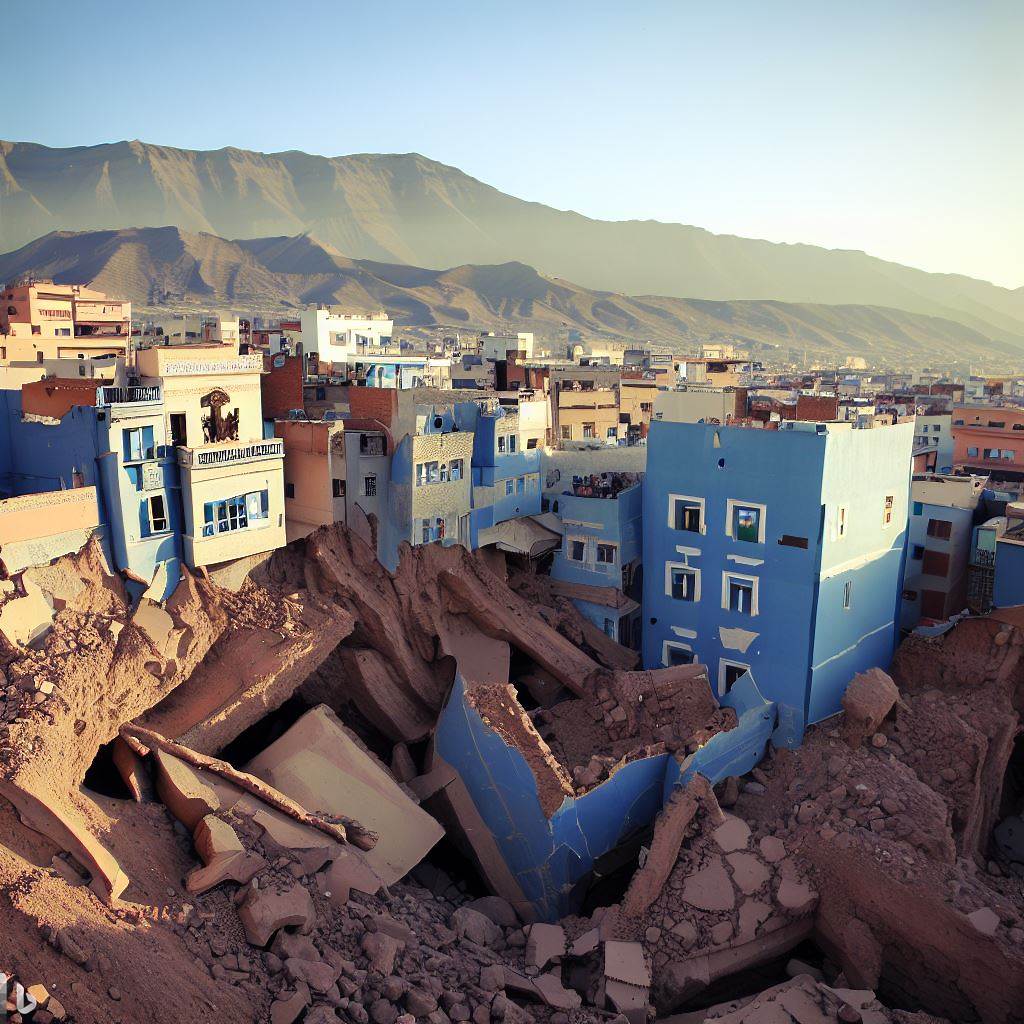A powerful earthquake struck Morocco late Friday, September 8, 2023, killing hundreds of people and damaging buildings in major cities and remote villages. The quake, which had a magnitude of 6.8, was one of the strongest and deadliest to hit the North African country in decades. In this blog post, we will explore the reasons why the earthquake in Morocco has caused so much damage and what can be done to prevent such disasters in the future.
The Shallow Depth of the Earthquake
One of the main factors that contributed to the severity of the earthquake in Morocco was its shallow depth. According to the US Geological Survey, the epicenter of the quake was about 18.5 km below the surface, though Morocco’s own seismic agency pegged the depth at 11 km1. Either way, it was a fairly shallow quake.
Shallow earthquakes are generally more dangerous than deep ones because they carry more energy to the surface and cause stronger shaking. Deep earthquakes, on the other hand, lose energy as they travel through the earth’s layers and reach the surface with less force. Shallow earthquakes also tend to produce more aftershocks, which can further damage buildings and infrastructure.
The Location of the Earthquake
Another factor that influenced the impact of the earthquake in Morocco was its location. The quake occurred in a mountainous area near the town of Ighil, about 70 km south-west of Marrakech2. This area is part of the High Atlas mountain range, which is a complex plate boundary where the African plate converges with the Eurasian plate3. This convergence causes stress and strain in the crust, which can result in earthquakes.
The location of the earthquake also affected its accessibility and response. Many of the casualties and damages occurred in remote villages that were hard to reach by road or air. Rescue workers faced challenges in accessing these areas and providing aid to the survivors. Moreover, some of the affected areas were also home to historic and cultural sites, such as Marrakech’s old city, which is a UNESCO World Heritage Site4. The earthquake damaged many buildings and monuments in these areas, causing a loss of heritage and tourism.
The Lack of Preparedness and Resilience
A third factor that exacerbated the consequences of the earthquake in Morocco was the lack of preparedness and resilience among the population and authorities. Earthquakes are not very common in North Africa, and Morocco has a relatively low seismic risk compared to other regions5. Therefore, many people and buildings were not prepared for such a strong quake.
According to experts, many buildings in Morocco do not comply with seismic codes and standards, and are vulnerable to collapse or damage during earthquakes6. Some of these buildings are old and poorly maintained, while others are new and poorly constructed. Moreover, many people do not have adequate knowledge or awareness about earthquake safety measures, such as how to protect themselves during shaking or how to evacuate after an earthquake.
Conclusion
The earthquake in Morocco was a tragic event that claimed hundreds of lives and caused widespread destruction. The quake was so powerful and damaging because of its shallow depth, its location near a complex plate boundary and historic sites, and its lack of preparedness and resilience among the population and authorities. To prevent such disasters in the future, Morocco needs to improve its seismic monitoring and warning systems, enforce its building codes and standards, educate its people about earthquake risks and responses, and enhance its disaster management and recovery capabilities.


